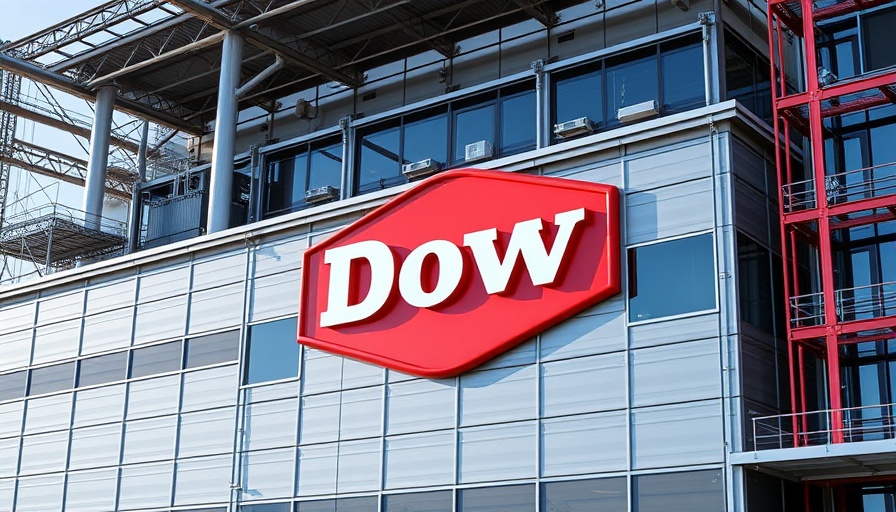
The Current Landscape of Chemical Manufacturing in Europe
Dow’s recent announcement to close three chemical plants in Europe, leading to 800 job cuts, highlights a pressing issue facing manufacturers in the region. The closures will affect an ethylene cracker in Germany and two other plants critical to its operations, reflecting broader struggles within the chemical industry. With rising production costs and fluctuating demand, companies are forced to take drastic actions to remain competitive.
Understanding Dow's Strategic Moves
The Midland-based company is not acting in isolation; other global chemical giants are also reassessing their investments in Europe. A combination of high energy prices and strict EU regulations has created an environment where companies must innovate or exit less profitable markets. This trend suggests that firms may need to pivot towards more sustainable practices while finding efficiencies to manage costs.
Broader Economic Implications
This development signals an important factor for investors to consider: the chemical sector, a vital cog in the industrial wheel, is facing significant headwinds that could influence stock market trends. As Dow and similar companies take steps to streamline their operations, analysts will be watching how these changes impact stock prices and investor sentiment across the board.
The Future of Investment in the Chemical Sector
Investors should heed these changes when formulating their investment strategies. Companies that adapt to the current challenges have the potential for recovery and growth, suggesting that opportunities may arise in sectors involved in sustainable practices or alternative materials. Investors focusing on ETFs or mutual funds that include these chemical firms may find themselves navigating a more volatile yet potentially lucrative market.
Investment Strategies Amid Changing Industries
This shift in Dow’s operations raises essential questions about portfolio diversification and risk management. For those considering investments in stocks like Dow, it may be prudent to look beyond traditional holdings and incorporate growth stocks or emerging technologies in their strategies. Understanding the challenges within specific sectors can help investors make informed decisions that align with their long-term goals.
Potential Risks and Considerations
With the stock market insulation decreasing, risks abound in investing directly in chemical manufacturing firms. Economic indicators, such as inflation rates and demand fluctuations, could play a crucial role in impacting returns. Investors could consider diversifying into sectors that are historically less volatile, such as real estate or ETFs focused on sustainability, to mitigate risks associated with single-industry investments.
Looking Ahead: The Evolving Landscape
As the chemical industry adapts to current realities, the future remains uncertain yet optimistic. The transition of companies like Dow sheds light on larger market trends that investors must navigate. Keeping abreast of the evolving regulations and economic pressures can empower investors to pivot their strategies in real-time.
In conclusion, the closure of Dow’s plants is more than a corporate decision; it signals evolving market conditions that demand awareness from investors. By adjusting strategies in line with industry trends, one can position themselves for long-term success.
 Add Row
Add Row  Add
Add 



Write A Comment